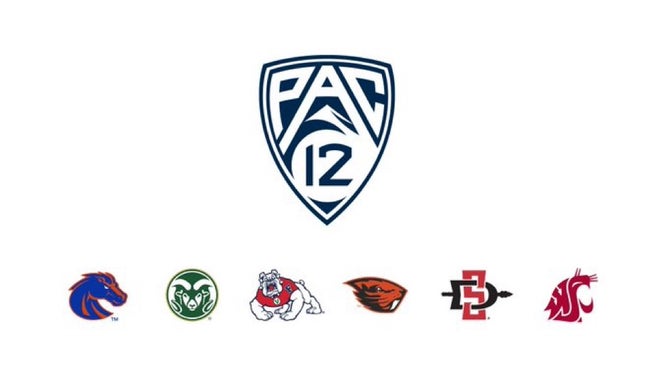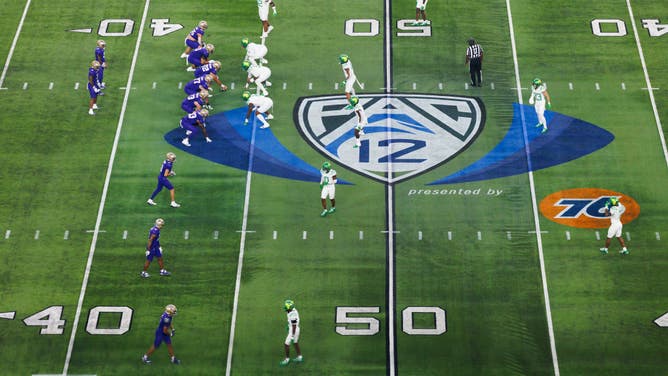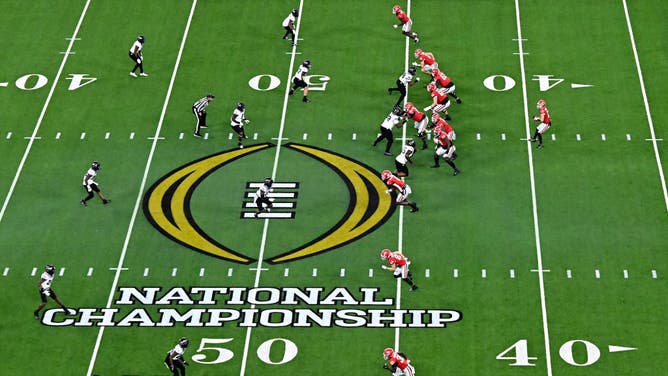Pac-12 Revival: The Conference Is Poaching Four Teams From Mountain West In Massive Realignment Move
After the mass exodus that we witnessed last year, the Pac-12 has risen from the ashes, putting together a plan that will add four teams from the Mountain West Conference in another round of realignment that will bring the once left-for-dead league back to the table in college athletics.
After shouting from the rooftops that the Pac-12 could still play a factor in the future, and that just because ten teams decided to leave for greener pastures, the conference is putting a whole new band together.
How’s that song go? 'Gather round this table, boys. Bring your shame, I'll lose my voice'.
Following the realignment that seemingly left the conference hanging on by a thread, with ten schools deciding to head elsewhere led by Oregon, Washington, USC and UCLA, the long-thought out plan of keeping the Pac-12 brand alive is coming to fruition.
It was officially announced on Thursday morning by the Pac-12.
"For over a century, the Pac-12 Conference has been recognized as a leading brand in intercollegiate athletics," Commissioner Teresa Gould stated. "We will continue to pursue bold cutting-edge opportunities for growth and progress, to best serve our member institutions and student-athletes. I am thankful to our board for their efforts to welcome Boise State University, Colorado State University, California State University, Fresno, and San Diego State University to the conference. An exciting new era for the Pac-12 Conference begins today."
As first reported by Yahoo Sports, and confirmed by OutKick from multiple sources, the conference that currently only consists of Washington State and Oregon State is making their move to bring in four teams from the Mountain West. This move would put them at six schools. The plan was to have Fresno State, Colorado State, Boise State and San Diego State apply to join the conference, which would then be approved by the current two schools.
On Thursday morning, all four teams were accepted into the Pac-12, after applying for admission.

The Pac-12 conference has successfully poached four teams from the Mountain West Conference
It certainly didn't help the Mountain West conference when they could not come to an agreement with the Pac-12 on a future scheduling model, with the deadline already passing earlier this month.
Sources tell OutKick that the missed deadline gave the Pac-12 conference the perfect incentive to make a move on Mountain West schools.
This move would set the foundation for the Pac-12 to remain an FBS conference that is recognized by the NCAA, with an additional two teams needed to meet the requirements of eight institutions. The schools that plan to leave the Mountain West conference would then begin playing in the ‘new’ Pac-12 starting in 2026.

The Pac-12 conference is looking to add six more teams by 2026, and it looks as though they've already found four from the Mountain West (Photo by Ric Tapia/Getty Images)
Right now, the Pac-12 is working under a ‘grace period’ provided by the NCAA that maintains their status as an FBS conference, but that period will end in 2026. The move to poach enough teams to solidify the Pac-12 has always been the hope from the two remaining schools, as the brand still carries enough weight when it comes to history and tradition, with the conference name alone being a staple-point of college athletics.
Now, the schools that are looking to leave the Mountain West conference will have to pay $17 million, along with an additional $43 million that is part of a scheduling agreement. This would lead to the Mountain West conference receiving a total of $111 million in exit fees combined. .
For the Mountain West, receiving that much money gives them the opportunity to go after other G-5 schools, or potentially bring up a few institutions from the FCS level. Time will tell what the MWC decides to do going forward.
Even though there is a 2-year transition period in jumping to the FBS level, meaning they cannot participate in the postseason during that time period, the enticement of getting up to the next level, along with finances, are enticing.
How The Pac-12 Will Financially Move Forward With New Teams
In terms of future monetary opportunities, the new college football playoff contract, along with revenue shared from the NCAA Tournament, would be enticing enough for other schools to take a harder look at joining the Pac-12. Yes, the conference would technically be in the ‘Group Of Five’ category, since they lost the ‘power conference’ title when the previous members left.
One of the key parts of the expansion will hinge on a media rights deal for the Pac-12, but that should not be a problem when it comes to future revenue, especially adding teams from the four markets previously mentioned. Currently, Washington State and Oregon State have an agreement with the CW network to broadcast its games, while the MWC has a deal with CBSSN.
The addition of four teams now, with two more to come before the start of the 2026-2027 season will mean that the Pac-12 should have multiple options for a media deal. Now, who will bid on the conference rights is the main question. But, if they can get in the ballpark of the AAC, or possibly reach the $18-20 million range, this could work in their favor.
Would ESPN and Apple TV come back to the table after the original Pac-12 turned down their offer before the previous chaos took place? They could, or there could be another combination of networks wanting to get in on the action.
But, there is still money to be made, and there would be incentives for other ‘Group Of Five’ schools to look at the Pac-12 as a potential destination. Will we see the geographic moves that we witnessed in the latest round of realignment, like Cal and Stanford joining the ACC? I would say that it could be a possibility, if the financial situation is right, for any school looking to leave their current conference, like the AAC or Sun Belt, just for reference.

INGLEWOOD, CALIFORNIA - JANUARY 09: A view of the National Championship logo on the field as the Georgia Bulldogs run a play against the TCU Horned Frogs in the College Football Playoff National Championship game at SoFi Stadium on January 09, 2023 in Inglewood, California. (Photo by Kevork Djansezian/Getty Images)
In the grand scheme of things, this would be a major move for the Pac-12, given the ever-changing landscape of college athletics, and the pending revenue-sharing model that is currently being litigated in a courtroom.
Since the departures of the ten previous conference schools, the CFP committee took away the Pac-12's automatic bid, and made it an ‘at-large’ spot. But, the opportunity for the conference to get back an automatic bid to the college football playoff would be a very big deal for schools looking to join in the next two years.
We are certainly not done with realignment in college sports, and the Pac-12 is looking to rise from the ashes of what was a premier conference in college athletics.
The conference will obviously not look the same when it comes to the pedigree of its potential future teams, but the conference name is still alive, and it's starting to look like we'll be getting ‘Pac-12 After Dark’ back.
There are still more questions left to be answered. I'm starting to wonder if the new Pac-12 is born before Clemson and Florida State can get out of the courtroom.